
In this lesson, students explore the artwork of Georges Seurat and create a masterpiece.
- Subject:
- Arts Education
- Material Type:
- Lesson Plan
- Provider:
- Crayola
- Date Added:
- 06/14/2018

In this lesson, students explore the artwork of Georges Seurat and create a masterpiece.
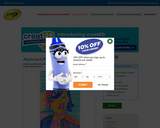
In this lesson, students observe and discuss realistic and abstract portraits, and compare and contrast the differences. Students will then create a whimsical, abstract self-portrait in the style of Cubist artist, Pablo Picasso.
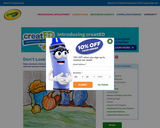
In this lesson, students examine fine art reproductions and discuss the various artists' interpretations of what they saw. Then students will participate in a blind line drawing exercise.
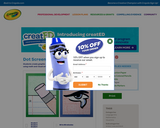
In this lesson, students examine Roy Lichtenstein's artwork. Students will then either replicate a Lichtenstein artwork or create an original one in his style.
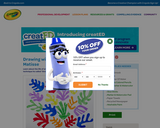
In this lesson, students examine Henry Matisse's artwork, making note of how his art changed throughout his career. Students will then work collaboratively to either replicate a Matisse artwork or create an original one in his style.
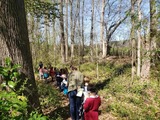
The North Carolina Museum of Natural Science created this resource as part of an online workshop series, but you are welcome to use or modify it for your classroom. It includes a video and written directions for creating nature journals and tips for incorporating them into your classroom. For information on taking any the Nature Neighborhood online workshops for CEUs or EE credit, visit: https://naturalsciences.org/learn/educators/online-workshops.

Students will use their animal sketches and notes from the last art class to generate ideas and create a 3-D paper hand puppet of the animal they chose to study. Teacher will demonstrate a variety of paper sculpture and folding techniques. Students will use these paper sculpture techniques and choose contrasting colors/shapes to create an expressive hand puppet with big, bold, and expressive elements of art. Some recycled papers will be used to teach recycling and conserving of our paper resources. Fraction folding techniques/terminology will integrate math into this art lesson. This lesson was developed by Nancy McGuire as part of their completion of the North Carolina Global Educator Digital Badge program. This lesson plan has been vetted at the local and state level for standards alignment, Global Education focus, and content accuracy.

Students will use their notes, sketches, and paper hand puppet from the previous lessons in this unit to write and illustrate a booklet about their animal and the global region where it lives/lived. Students will understand the correlation between art and literacy as they create a short booklet about their animal and its habitat. Students will prepare to share these short stories with their peers in the form of a collaborative puppet show when they have completed their illustrated booklets. This lesson was developed by Nancy McGuire as part of their completion of the North Carolina Global Educator Digital Badge program. This lesson plan has been vetted at the local and state level for standards alignment, Global Education focus, and content accuracy.

Students will learn the concept of and procedure for changing color value. They will then apply these new understandings as they create their own abstract scribble design and use a monochromatic palette to paint their design with watercolor paint.

Students will construct their own "pieces of the pie" using concepts of primary, secondary and intermediate color.

Students will understand the difference between a sculpture and a drawing or painting, understand the meaning of the word silhouette and will create a simple silhouette of any animal or object they choose and use that drawing to create a sculpture piece which is mounted to a wooden base.

This free website provides more than 600 adaptable lesson plans written by teachers in collaboration with the Denver Art Museum for more than 130 objects from the museums world-class art collection. Lesson plans and resources focus on inspiring students to think and problem-solve creatively. Organized in an easy way so that teachers can pick the topic they would like to explore or enhance, then use works of art to teach that subject.
High resolution images are included. Museum visits are not necessary to implement lesson plans. Includes professional and student development tools such as teacher workshops and webinars, virtual classroom courses, career videos, educator blogs and creativity tools. Easy for teachers in language arts, social studies and visual arts to provide a curriculum rooted in the arts while also meeting 21st Century Skills.

Students will learn the value of and how to incorporate symbolism as a means of expressing personal meaning as they create an original family tree which represents their family and culture. They will incorporate language arts skills through expressing their personal story in writing a composition, as well as history as they orally express the ideas they have set forth both in their symbolic rendering as well as their writing composition.